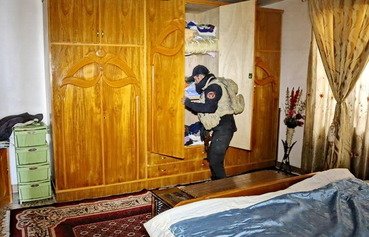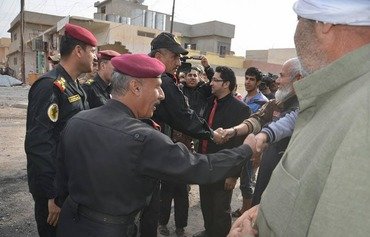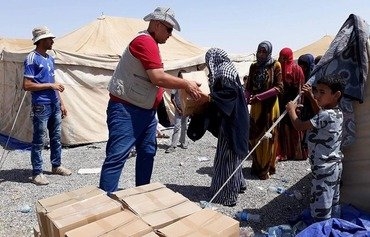Iraqi officials have been working to verify the identities of internally displaced persons (IDPs) from Mosul in order to weed out any "Islamic State of Iraq and Syria" (ISIS) elements who might be hiding among them.
Joint committees comprised of Ministry of Interior and security personnel have been working in all displacement camps to inspect the identity documents of IDPs against a database of known members of ISIS.
The database is compiled from security and intelligence sources, as well as police reports filed by members of the public, said ministry media consultant Wahab al-Taie.
"We have the names and images of terrorists and details of their activities and leadership roles in ISIS's structure, and we also know those that support and fund terrorism," he told Diyaruna.
"Most of this information reached us through advanced intelligence efforts during ISIS's control of Mosul," he said.
Plainclothes security personnel worked undercover in ISIS-controlled areas to collect information about the group's elements and activities and to photograph them when possible, al-Taie said.
The images they collected are now being used to identify ISIS elements and bring them to justice, he added.
"Investigations rely on a systematic approach of electronically verifying personal data and documents against those uploaded into the database on militants, as well as identifying terrorists from their pictures," he said.
These measures have resulted in the capture of many ISIS elements who had been hiding among fleeing families, he said, thereby preventing sleeper cells from forming in liberated areas.
They also have contributed to providing a safe environment for returnees.
Preventing sleeper cells from forming
There is no safe haven for ISIS, al-Taie said, noting that fighters who managed to escape Mosul for Tal Afar "are preparing to flee the country, according to our sources".
Verifying the identities of IDPs has helped to thwart ISIS's plans to regroup after losing Mosul, strategic expert and former Iraqi military officer Ahmed al-Sharifi told Diyaruna.
"After terrorists were defeated on the battleground, they tried to infiltrate fleeing families in an attempt to regroup and begin covert terrorist operations," he said.
As a result of the security procedures, however, the security forces have managed to capture a large number of ISIS elements inside the displacement camps and thwart their plans to destabilise liberated areas, he added.
Al-Sharifi stressed the need to expand counter-terrorism intelligence efforts.
"The database we have provides a rich source of information on militants but not all of them, of course, especially foreign fighters whose identities and backgrounds might not be well known," he said.
"We must double down on our efforts to capture and surveil terrorism incubators while encouraging locals to come forward with any information," he added.
Mosul residents and IDPs have been helping the security forces by providing information on ISIS elements and their whereabouts, said Ninawa provincial council services committee member Hosam Eddin al-Abbar.
"There have lately been several instances of local residents of Mosul capturing ISIS members in hiding and handing them over to the authorities, which proves that people just want to live in peace and safety," he said.

![Members of the Iraqi security forces stand guard over captured 'Islamic State of Iraq and Syria' elements. [Photo from the Ninawa operations war media Facebook page]](/cnmi_di/images/2017/08/22/9234-Iraq-Mosul-ISIS-600_384.jpg)






